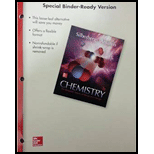
Chemistry: The Molecular Nature of Matter and Change (Looseleaf)
7th Edition
ISBN: 9780078130519
Author: SILBERBERG
Publisher: MCG
expand_more
expand_more
format_list_bulleted
Concept explainers
Question
Chapter 15, Problem 15.52P
Interpretation Introduction
Interpretation:
The reason for different reactivity of
Concept Introduction:
The
The
Expert Solution & Answer
Want to see the full answer?
Check out a sample textbook solution
Students have asked these similar questions
For the following alkyne, complete the reaction sequentially (that is draw the intermediate that we can’t stop at) and then name (complete name) all 3 molecules.
Given the reaction sequence below, answer the following.
A. Provide the structure for A.
B. Provide the structure for B (pay attention to stereochemistry).
C. Provide the structure for C.
D. What are the stereochemical designations for I and II (R/S)?
Which of the following is the most stable carbon radical?
Chapter 15 Solutions
Chemistry: The Molecular Nature of Matter and Change (Looseleaf)
Ch. 15.2 - Prob. 15.1AFPCh. 15.2 - Prob. 15.1BFPCh. 15.2 - Prob. 15.2AFPCh. 15.2 - Prob. 15.2BFPCh. 15.2 - How many peaks appear in the NMR spectrum of each...Ch. 15.2 - Prob. B15.2PCh. 15.2 - Prob. B15.3PCh. 15.3 - Prob. 15.3AFPCh. 15.3 - Prob. 15.3BFPCh. 15.4 - Prob. 15.4AFP
Ch. 15.4 - Prob. 15.4BFPCh. 15.4 - Prob. 15.5AFPCh. 15.4 - Prob. 15.5BFPCh. 15.4 - Prob. 15.6AFPCh. 15.4 - Prob. 15.6BFPCh. 15.4 - Prob. 15.7AFPCh. 15.4 - Prob. 15.7BFPCh. 15.6 - Prob. B15.4PCh. 15.6 - Prob. B15.5PCh. 15 - Prob. 15.1PCh. 15 - Prob. 15.2PCh. 15 - Prob. 15.3PCh. 15 - Silicon lies just below carbon in Group 4A(14) and...Ch. 15 - What is the range of oxidation states for carbon?...Ch. 15 - Prob. 15.6PCh. 15 - Prob. 15.7PCh. 15 - Define each type of isomer: (a) constitutional;...Ch. 15 - Prob. 15.9PCh. 15 - Prob. 15.10PCh. 15 - Prob. 15.11PCh. 15 - How does an aromatic hydrocarbon differ from a...Ch. 15 - Prob. 15.13PCh. 15 - Prob. 15.14PCh. 15 - Prob. 15.15PCh. 15 - Prob. 15.16PCh. 15 - Prob. 15.17PCh. 15 - Prob. 15.18PCh. 15 - Prob. 15.19PCh. 15 - Prob. 15.20PCh. 15 - Prob. 15.21PCh. 15 - Prob. 15.22PCh. 15 - Prob. 15.23PCh. 15 - Prob. 15.24PCh. 15 - Draw structures from the following names, and...Ch. 15 - Prob. 15.26PCh. 15 - Prob. 15.27PCh. 15 - Prob. 15.28PCh. 15 - Prob. 15.29PCh. 15 - Prob. 15.30PCh. 15 - Prob. 15.31PCh. 15 - Prob. 15.32PCh. 15 - Prob. 15.33PCh. 15 - Prob. 15.34PCh. 15 - Prob. 15.35PCh. 15 - Prob. 15.36PCh. 15 - Prob. 15.37PCh. 15 - Prob. 15.38PCh. 15 - Prob. 15.39PCh. 15 - Prob. 15.40PCh. 15 - Determine the type of each of the following...Ch. 15 - Prob. 15.42PCh. 15 - Prob. 15.43PCh. 15 - Prob. 15.44PCh. 15 - Prob. 15.45PCh. 15 - Prob. 15.46PCh. 15 - Prob. 15.47PCh. 15 - Prob. 15.48PCh. 15 - Prob. 15.49PCh. 15 - Prob. 15.50PCh. 15 - Prob. 15.51PCh. 15 - Prob. 15.52PCh. 15 - Prob. 15.53PCh. 15 - Prob. 15.54PCh. 15 - Prob. 15.55PCh. 15 - Prob. 15.56PCh. 15 - Prob. 15.57PCh. 15 - Prob. 15.58PCh. 15 - Prob. 15.59PCh. 15 - Prob. 15.60PCh. 15 - Prob. 15.61PCh. 15 - Prob. 15.62PCh. 15 - Prob. 15.63PCh. 15 - Prob. 15.64PCh. 15 - Prob. 15.65PCh. 15 - Prob. 15.66PCh. 15 - Prob. 15.67PCh. 15 - Prob. 15.68PCh. 15 - Prob. 15.69PCh. 15 - Prob. 15.70PCh. 15 - Prob. 15.71PCh. 15 - Prob. 15.72PCh. 15 - Prob. 15.73PCh. 15 - Prob. 15.74PCh. 15 - Prob. 15.75PCh. 15 - Prob. 15.76PCh. 15 - Prob. 15.77PCh. 15 - Prob. 15.78PCh. 15 - Prob. 15.79PCh. 15 - Prob. 15.80PCh. 15 - Prob. 15.81PCh. 15 - Prob. 15.82PCh. 15 - Prob. 15.83PCh. 15 - Prob. 15.84PCh. 15 - Prob. 15.85PCh. 15 - Prob. 15.86PCh. 15 - Prob. 15.87PCh. 15 - What is the key structural difference between...Ch. 15 - Protein shape, function, and amino acid sequence...Ch. 15 - What linkage joins the monomers in each strand of...Ch. 15 - What is base pairing? How does it pertain to DNA...Ch. 15 - RNA base sequence, protein amino acid sequence,...Ch. 15 - Prob. 15.93PCh. 15 - Prob. 15.94PCh. 15 - Draw the structure of each of the following...Ch. 15 - Prob. 15.96PCh. 15 - Write the sequence of the complementary DNA strand...Ch. 15 - Prob. 15.98PCh. 15 - Prob. 15.99PCh. 15 - Prob. 15.100PCh. 15 - Prob. 15.101PCh. 15 - Amino acids have an average molar mass of 100...Ch. 15 - Prob. 15.103PCh. 15 - Prob. 15.104PCh. 15 - Some of the most useful compounds for organic...Ch. 15 - Prob. 15.106PCh. 15 - Prob. 15.107PCh. 15 - Prob. 15.108PCh. 15 - Prob. 15.109PCh. 15 - Prob. 15.110PCh. 15 - Prob. 15.111PCh. 15 - Prob. 15.112PCh. 15 - The polypeptide chain in proteins does not exhibit...Ch. 15 - Prob. 15.114PCh. 15 - Prob. 15.115PCh. 15 - Prob. 15.116PCh. 15 - Prob. 15.117PCh. 15 - Wastewater from a cheese factory has the following...Ch. 15 - Prob. 15.119P
Knowledge Booster
Learn more about
Need a deep-dive on the concept behind this application? Look no further. Learn more about this topic, chemistry and related others by exploring similar questions and additional content below.Similar questions
- Put the following carbon radicals in order of increasing stability.arrow_forwardDraw the major organic product for each of the following reactions (pay attention to stereochemistry).arrow_forwardThere are 2 reactions (that you know of) to achieve the following transformation: One reaction is favored over the other because it avoids a competing reaction. A. Draw the favored reaction scheme (not the mechanism), be sure to include all necessary reagents. B. Draw the reaction scheme that is not favored and include all the possible products.arrow_forward
- Both carbocations and carbon-radicals have trigonal planar geometry. True or Falsearrow_forwardTeflon (polytetrafluoroethene) is prepared via the radial polymerization of tetrafluoroethene. What other reaction conditions (reagent, etc.) are needed to accomplish this? A. NBS, Light B. Heat, Cl2 C. Peroxide, Heat D. H2SO4, H2O, Heatarrow_forwardWhich of the following compounds can be reacted with ethene to prepare 1,1- dichlorocyclopropane? A. CCl4 B. CCl2 C. CHCl3 D. CH2Cl2arrow_forward
- CI 4. How are the products of the following reaction related? (assuming we can control the chlorination as given by the reaction) C Cl2, light A. Enantiomers B. Constitutional isomers C. Regioisomers D. Diastereomers C +arrow_forwardVinyl and allyl radicals are equally stable due to resonance stabilization True OR Falsearrow_forwardAll of the following are true of Markovnikov’s rule EXCEPT A. The nucleophile adds to the most substituted carbon B. The more stable carbocation is formed in the transition state C. The electrophile adds to the carbon that has the most hydrogens D. There are no exceptions to this rulearrow_forward
arrow_back_ios
SEE MORE QUESTIONS
arrow_forward_ios
Recommended textbooks for you
 ChemistryChemistryISBN:9781305957404Author:Steven S. Zumdahl, Susan A. Zumdahl, Donald J. DeCostePublisher:Cengage Learning
ChemistryChemistryISBN:9781305957404Author:Steven S. Zumdahl, Susan A. Zumdahl, Donald J. DeCostePublisher:Cengage Learning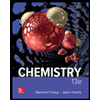 ChemistryChemistryISBN:9781259911156Author:Raymond Chang Dr., Jason Overby ProfessorPublisher:McGraw-Hill Education
ChemistryChemistryISBN:9781259911156Author:Raymond Chang Dr., Jason Overby ProfessorPublisher:McGraw-Hill Education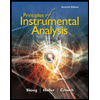 Principles of Instrumental AnalysisChemistryISBN:9781305577213Author:Douglas A. Skoog, F. James Holler, Stanley R. CrouchPublisher:Cengage Learning
Principles of Instrumental AnalysisChemistryISBN:9781305577213Author:Douglas A. Skoog, F. James Holler, Stanley R. CrouchPublisher:Cengage Learning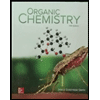 Organic ChemistryChemistryISBN:9780078021558Author:Janice Gorzynski Smith Dr.Publisher:McGraw-Hill Education
Organic ChemistryChemistryISBN:9780078021558Author:Janice Gorzynski Smith Dr.Publisher:McGraw-Hill Education Chemistry: Principles and ReactionsChemistryISBN:9781305079373Author:William L. Masterton, Cecile N. HurleyPublisher:Cengage Learning
Chemistry: Principles and ReactionsChemistryISBN:9781305079373Author:William L. Masterton, Cecile N. HurleyPublisher:Cengage Learning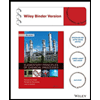 Elementary Principles of Chemical Processes, Bind...ChemistryISBN:9781118431221Author:Richard M. Felder, Ronald W. Rousseau, Lisa G. BullardPublisher:WILEY
Elementary Principles of Chemical Processes, Bind...ChemistryISBN:9781118431221Author:Richard M. Felder, Ronald W. Rousseau, Lisa G. BullardPublisher:WILEY

Chemistry
Chemistry
ISBN:9781305957404
Author:Steven S. Zumdahl, Susan A. Zumdahl, Donald J. DeCoste
Publisher:Cengage Learning

Chemistry
Chemistry
ISBN:9781259911156
Author:Raymond Chang Dr., Jason Overby Professor
Publisher:McGraw-Hill Education

Principles of Instrumental Analysis
Chemistry
ISBN:9781305577213
Author:Douglas A. Skoog, F. James Holler, Stanley R. Crouch
Publisher:Cengage Learning

Organic Chemistry
Chemistry
ISBN:9780078021558
Author:Janice Gorzynski Smith Dr.
Publisher:McGraw-Hill Education

Chemistry: Principles and Reactions
Chemistry
ISBN:9781305079373
Author:William L. Masterton, Cecile N. Hurley
Publisher:Cengage Learning

Elementary Principles of Chemical Processes, Bind...
Chemistry
ISBN:9781118431221
Author:Richard M. Felder, Ronald W. Rousseau, Lisa G. Bullard
Publisher:WILEY